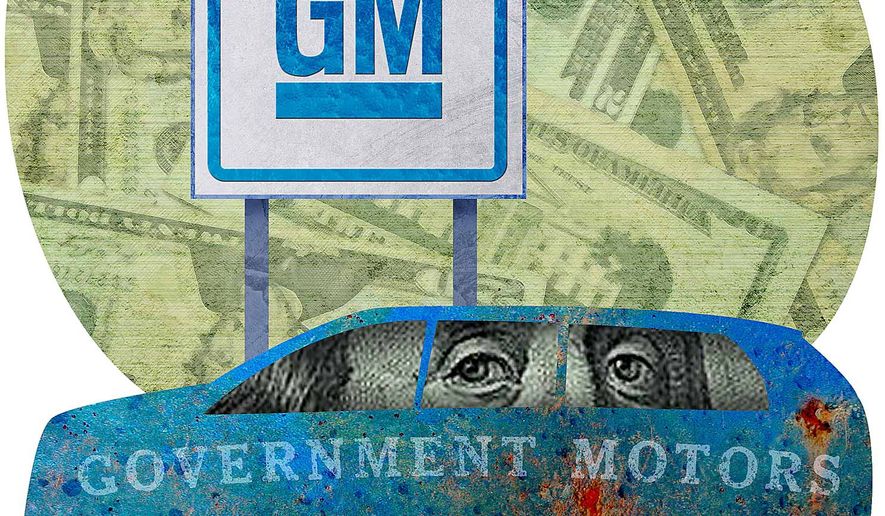OPINION:
They should have known better. When General Motors recently announced it would close several plants in the United States and lay off roughly 14,000 workers, everybody screamed — perhaps especially the liberals who supported GM’s bailout with more than $65 billion in taxpayer dollars and the installation of a government-selected board of directors and management.
Having the government pick winners and losers in business, providing the winners with taxpayer money and then saddling them with government control is nothing more than disguised socialism — akin to countries like the not-so-economically-successful Venezuela. Markets, not governments, should pick winners and losers and reward or punish them accordingly.
But the latest move by GM isn’t really about socialism; it’s about capitalism, pure and simple. From 2008 to 2013, the government and General Motors were bedfellows through a bankruptcy, a series of loans and multiple sales of company stock. In the end GM wrangled free, leaving taxpayers roughly $11.2 billion in the hole and the company able to go about its business without government control and subjected solely to the incentives of the market. The argument made by the left is that this five-year partnership was successful — saving jobs (union jobs), and rescuing American manufacturing. But GM staggered down the same path as before — building cars that nobody wanted and vacuuming up Obama administration tax incentives to pursue electric vehicles.
And now, just five years after the bailout ended, it’s time to review the numbers. After the current job cuts, GM will still have roughly 165,000 worldwide employees. About two-thirds of that total workforce is based in the United States. The government’s $11 billion largesse amounts then to roughly $100,000 per American job saved at the expense of taxpayers. Was that a good deal? What GM is doing now should have been entirely predictable — fail an exam at school, plead for mercy like a naughty school kid, get saved by helicopter parents, and then double down by firing a slingshot at the neighbor’s window.
What we are currently seeing in GM’s behavior is the free market at work. And if the government had instead let GM go down the path its management had built in 2008 the market also would have had its way. Yes, the company as we know it wouldn’t be around today, but its divisions and units would have been carved up, sold or merged into other manufacturers — like Chrysler was into Fiat. Naturally, some workers would have lost their jobs, but remember, 47,000 jobs were lost when GM restructured under government management and sold off or closed underperforming divisions like the Hummer line, anyway. The market spoke in 2008 about the vehicles GM was producing and it is speaking again today — just because you build it doesn’t mean they will come.
In 2008, GM faced declining sales due to producing over-priced vehicles that nobody wanted to buy. In November of that year, GM ran to the government to be saved, claiming its liquidity would soon drop to a level where it couldn’t operate. At the time GM had about $14 billion in cash. That sounds like a lot, but to fund an ongoing worldwide vehicle manufacturing supply chain, it’s marginal.
Today, GM again faces declining sales due to producing vehicles nobody wants to buy and now has roughly $24 billion in cash. But if you take away that $11 billion taxpayer gift, GM is exactly where it was in 2008. It’s deja vu all over again.
Critics will point to GM today and blame the recently announced layoffs and plant closings on the failings of capitalism, but they are actually the success of capitalism. GM is shifting more of its production into building low miles per gallon SUVs — because they sell. And at the same time, it’s eliminating production of more efficient gas-powered vehicles, built to satisfy government emission regulations, because they don’t sell.
And while GM is managing its product lines to meet consumer demand, it’s still doubling down on electric vehicle production, which doesn’t sell, because it still gets tax credits. GM may have been saved through Obama-era socialist quasi-nationalization, but its business is still consumer driven. The market is working exactly as it should — picking winners and losers — and GM is finally listening, only now with $11 billion extra taxpayer dollars.
• Kevin Cochrane teaches business and economics at Colorado Mesa University, and is also a permanent visiting professor of economics at The University of International Relations in Beijing.




Please read our comment policy before commenting.